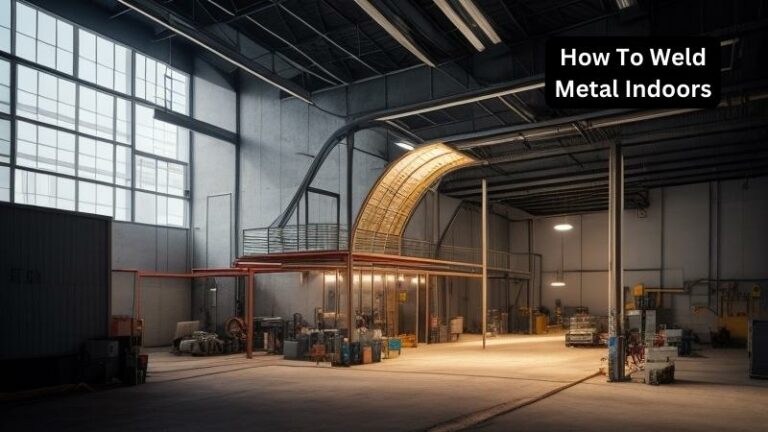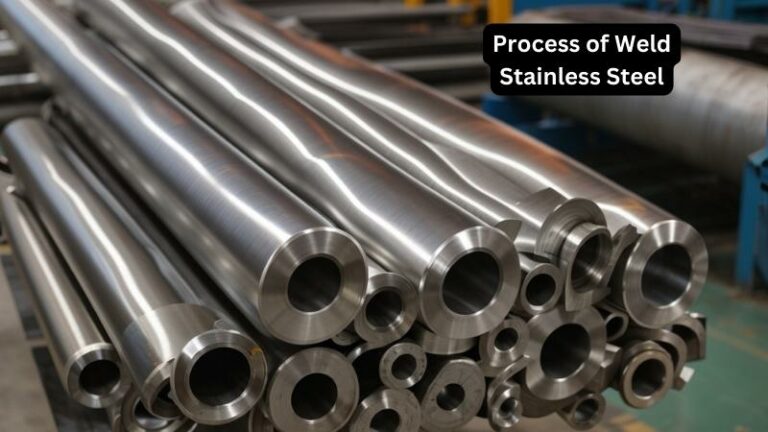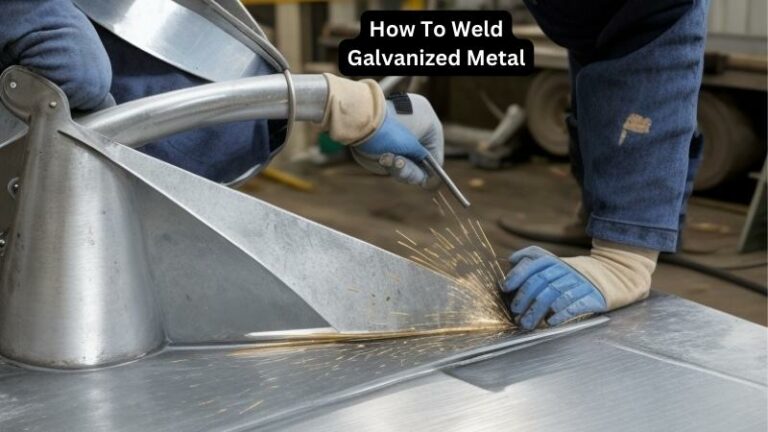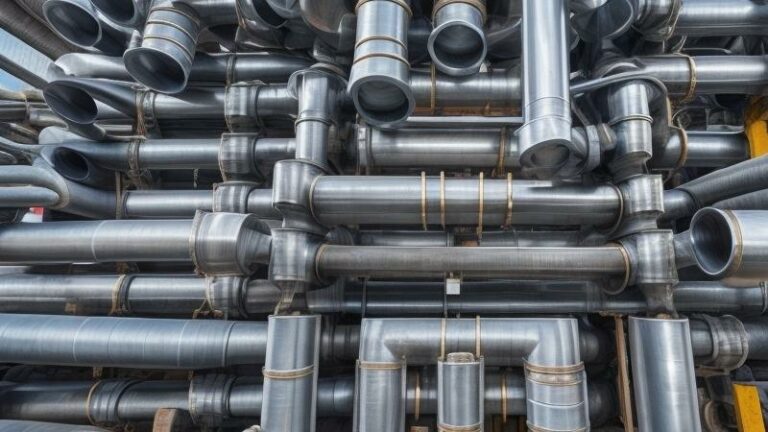How To Weld Different Metals Together
Today we discuss How To Weld Different Metals Together. Welding is like a magical bond that transforms separate pieces of metal into one solid unit. Have you ever wondered how this is done? Well, wonder no more, because in this article, we’re going to explore the techniques and tips to help you weld different metals together successfully. So, let’s dive in and discover the exciting world of welding!
Are you ready to take your metalworking skills to the next level? Learning how to weld different metals together opens up a whole new world of creative possibilities. From joining steel and aluminum to fusing stainless steel and copper, we’ll cover it all. So grab your safety gear and get ready to embark on a welding adventure that will leave you feeling like a master craftsman. Let’s get started!
How To Weld Different Metals Together:
- Welding different metals can be a challenging task, but with the right technique, it’s entirely possible. Follow these steps to weld different metals together successfully:
- Prepare the metals by cleaning them thoroughly.
- Choose the appropriate welding method based on the metals involved.
- Set up your welding equipment and wear proper safety gear.
- Position the metals and secure them in place.
- Start the welding process, ensuring proper heat and speed.
- Allow the weld to cool and inspect the joint for quality.
How to Weld Different Metals Together: A Guide to Joining Diverse Metal Types
Welding is a versatile and essential skill for fabricators, engineers, and DIY enthusiasts. However, welding different metals together can be a challenging task due to their varying compositions and properties. In this comprehensive guide, we will explore the techniques, considerations, and best practices for welding different metals. Whether you’re working with steel, aluminum, stainless steel, or other alloys, this guide will equip you with the knowledge and skills to achieve strong and reliable welds.
The Importance of Choosing the Right Welding Method and Filler Metal:
When it comes to welding different metals together, it’s crucial to select the right welding method and filler metal. Each metal has unique characteristics that influence the choice of welding technique. For instance, steel can be effectively welded using various methods such as shielded metal arc welding (SMAW), gas metal arc welding (GMAW), or flux-cored arc welding (FCAW).
On the other hand, aluminum requires a different approach, typically using methods like gas tungsten arc welding (GTAW) or, for thicker sections, gas metal arc welding (GMAW). Understanding the properties of the metals you are working with will help you determine the most suitable method for achieving strong and durable welds.
Another critical aspect of welding different metals together is selecting the appropriate filler metal. The filler metal should have similar properties to the base metals to ensure good fusion and joint strength. For example, when welding stainless steel, it is essential to use a filler metal with a similar composition, such as ER308 or ER316, to prevent corrosion and maintain the integrity of the weld.
Similarly, when joining aluminum, using an aluminum filler wire, such as ER4043 or ER5356, is recommended. By matching the filler metal to the base metals, you can create welds that are resistant to cracking, provide maximum strength, and exhibit excellent corrosion resistance.
The Challenges of Welding Different Metals: Steel and Aluminum:
Welding Steel:
Steel is a commonly used metal in various applications, thanks to its strength, durability, and affordability. Welding steel involves processes like SMAW, GMAW, FCAW, and more, depending on the thickness and type of steel being welded. However, steel presents its own challenges.
One common issue is the potential for distortion or warping of the metal due to the high heat input during welding. To minimize distortion, techniques such as tack welding and proper joint preparation can be employed. Additionally, pre-heating the steel and utilizing a lower heat input during the welding process can also help control distortion.
Another challenge when welding steel is the formation of brittle areas called heat-affected zones (HAZ). The HAZ can result in reduced impact strength and increased susceptibility to cracking. To mitigate this, post-weld heat treatment or stress relief annealing may be necessary, particularly for critical applications where strength is paramount.
Welding Aluminum:
Aluminum possesses excellent thermal conductivity and a high coefficient of expansion, making it significantly different from steel when it comes to welding. The high thermal conductivity dissipates heat quickly, requiring specialized techniques such as GTAW or GMAW and a skilled welder to prevent cold welds and incomplete fusion.
The high coefficient of expansion poses another challenge. As the temperature of the aluminum increases during welding, it expands more rapidly than steel. This can lead to distortion and possibly cracked welds if proper precautions are not taken.
To combat these issues, jigs and fixtures can be used to keep the parts in alignment, and careful control of heat input is necessary to achieve successful welds. Additionally, cleaning the aluminum surface thoroughly before welding and using shielding gases specifically designed for aluminum is crucial to prevent weld contamination and porosity.
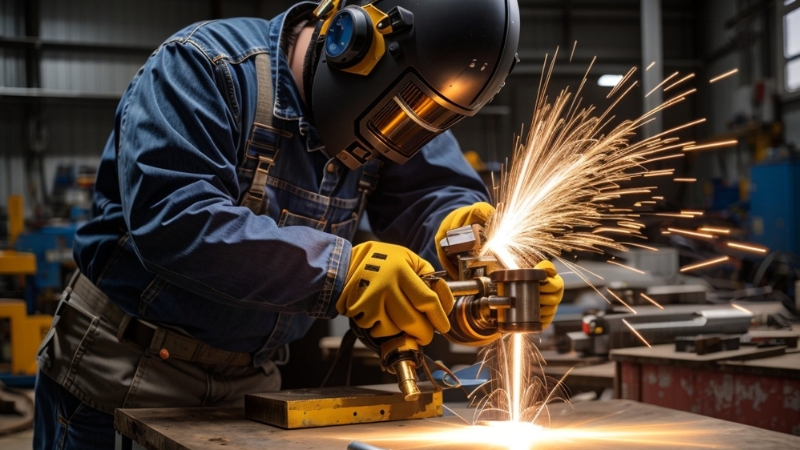
Joining Stainless Steel and Other Alloys: Considerations and Techniques
Welding Stainless Steel:
Stainless steel is known for its corrosion resistance, strength, and aesthetic appeal, making it a popular choice in industries ranging from architecture to food processing. However, welding stainless steel requires additional considerations as compared to welding carbon steel.
One crucial factor is the susceptibility to intergranular corrosion. This type of corrosion can occur due to the precipitation of carbides in the grain boundaries of the stainless steel during welding. To prevent intergranular corrosion, it is essential to use low-carbon filler metals like ER308L or ER316L and maintain proper welding parameters.
Another consideration when welding stainless steel is ensuring adequate shielding gas coverage. Stainless steel is highly sensitive to oxygen, which can lead to the formation of oxides and result in weld defects. Using a shielding gas with high levels of argon or a mixture of argon and helium is recommended for achieving clean and strong stainless steel welds.
Joining Other Alloys:
In addition to welding steel, aluminum, and stainless steel, there are numerous other alloys and metals that require specific welding techniques and considerations. Copper, for example, is often used in electrical applications due to its high electrical conductivity. When welding copper, it is important to use suitable equipment and techniques, such as electron beam welding or laser welding, which provide precise control and minimize heat input.
Titanium is another challenging metal to weld due to its high reactivity with oxygen and other atmospheric gases. Welding titanium requires an inert atmosphere or a shielding gas, such as argon, to prevent contamination and maintain the metal’s integrity.
These are just a few examples of the diverse range of alloys and metals that can be welded together. Each type has its own unique properties and considerations, and it is crucial to thoroughly research and understand them before attempting to weld them.
General Tips for Welding Different Metals Together
While the specific techniques and considerations for welding different metals vary, there are some general tips that can help ensure successful welds:
- Cleanliness is crucial: Properly clean the surfaces to be welded to remove any dirt, rust, or contaminants that could compromise the quality of the weld.
- Preheating and post-weld heat treatment: Depending on the metal and the application, preheating the base metal before welding, and performing post-weld heat treatment, may be necessary to reduce distortion and improve the strength of the weld.
- Mock-up and practice: Before welding the actual workpiece, it’s beneficial to practice on scrap or test pieces to refine techniques and ensure optimal settings.
- Proper joint preparation: Be sure to prepare the joint properly by appropriately beveling or chamfering the edges to achieve good penetration and fusion.
- Controlled heat input: Use the appropriate welding parameters, such as current, voltage, and travel speed, to regulate the heat input and minimize distortion.
- Use specialized equipment and consumables: Certain metals may require specific filler metals, shielding gases, or welding processes. Ensure you have the right equipment and consumables for the job.
By following these tips and understanding the specific requirements of each metal, you can overcome the challenges associated with welding different metals and achieve high-quality welds that meet the desired mechanical properties and structural integrity.
Key Takeaways: How To Weld Different Metals Together
- Choose an appropriate welding technique based on the types of metals being joined.
- Prepare the metal surfaces by cleaning them thoroughly.
- Use the correct welding equipment and materials for each specific metal.
- Follow safety precautions, such as wearing protective gear and working in a well-ventilated area.
- Practice and master the welding technique through training and experience.
Faqs for How To Weld Different Metals Together:
Yes, it is possible to weld stainless steel to carbon steel, but it requires some careful consideration. The main challenge when welding these two metals together is the difference in their melting points. Stainless steel has a higher melting point than carbon steel, so you need to use welding techniques that can handle the higher temperatures required.
One method is to use a filler metal that is compatible with both stainless steel and carbon steel, such as a nickel-based alloy. This filler metal acts as a buffer, allowing the stainless steel and carbon steel to bond together without compromising the integrity of the weld joint. It’s essential to clean the metal surfaces thoroughly before welding and use the appropriate shielding gas to prevent oxidation during the welding process.
Yes, it is possible to weld aluminum to steel, but it can be challenging due to the significant differences in their physical properties. The main issue when welding these two metals together is the formation of brittle intermetallic compounds at the weld joint. These compounds can weaken the weld and compromise its strength.
To overcome this challenge, you can use techniques such as friction stir welding or explosive welding. Friction stir welding is a solid-state joining process that heats and stirs the metals together, creating a bond without melting the parent materials. Explosive welding uses controlled explosives to bond the aluminum and steel plates together.
The best method for welding copper to brass depends on the specific application and the thickness of the materials. One common welding method is to use brazing, which involves melting a filler metal with a lower melting point than the base metals. The filler metal then flows between the copper and brass, creating a strong joint.
Another option is to use a specialized welding process called friction stir welding, which can successfully join copper and brass materials. This process involves a rotating tool that generates heat and pressure to join the metals together. It is particularly useful for welding dissimilar materials, like copper and brass, without the need for additional filler metals.
Welding cast iron to steel can be challenging due to the difference in their composition and properties. Cast iron is brittle, while steel is more ductile. Therefore, it is crucial to use the right welding technique to minimize the risk of cracking and ensure a strong weld joint.
One technique for welding cast iron to steel is to use preheating and post-weld heat treatment. Preheating the cast iron helps to reduce the temperature difference and prevent cracking, while post-weld heat treatment relieves stress and improves the overall weld integrity.
Welding titanium to stainless steel requires careful consideration due to the vast difference in their physical properties. One common method for joining these two metals is using explosion welding. This process involves the controlled use of explosives to bond the titanium and stainless steel plates together. It creates a strong metallurgical bond without compromising the properties of either metal.
It’s important to note that welding titanium requires special precautions, as titanium is highly reactive with oxygen and other impurities. To ensure a successful weld, it’s crucial to create a high-quality, oxygen-free welded joint by using a protective gas shield and thoroughly cleaning the surfaces before welding.
Conclusion:
Welding different metals together requires careful consideration of their properties and the selection of appropriate welding techniques and filler metals. Whether you’re working with steel, aluminum, stainless steel, or other alloys, understanding the challenges and best practices for each metal is crucial for achieving strong and reliable welds. By adhering to proper joint preparation, controlling heat input, and following general welding tips, you can overcome the challenges associated with joining diverse metal types and create welds that meet the highest standards of quality and durability.
